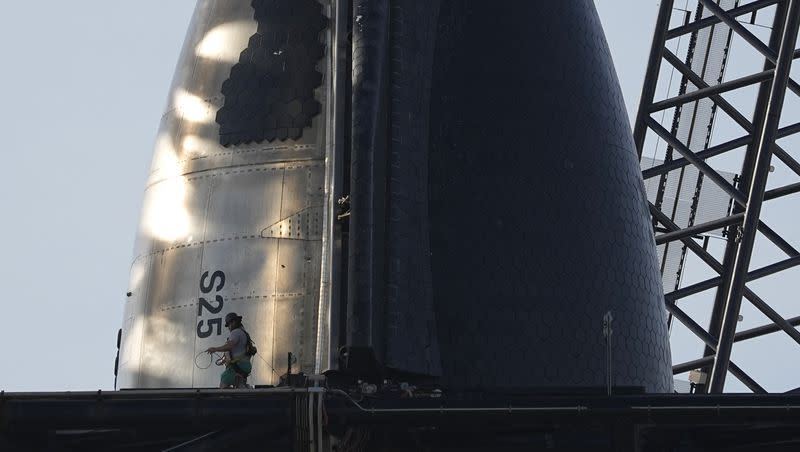SpaceX engineers had to blow up Starship spacecraft on its first launch. Second attempt set for Saturday

SpaceX will have a second try at a successful launch of its massive Starship rocket system on Saturday after an April attempt led to a midair explosion, destruction of the rocket launch pad and debris raining down for miles around the company’s Texas launch facility.
Initially scheduled for Friday, SpaceX is now shooting to catch a 20-minute launch window that opens at 6 a.m. MST on Saturday after making a minor repair to the rocket booster.
The April debut Starship launch attempt ran into trouble about four minutes into its flight when the rocket began tumbling briefly before SpaceX engineers triggered a self-destruct sequence that caused the spaceship and rocket booster to be destroyed in fiery explosions.
Debris from the explosions fell in a wide area, including particulates that reportedly fell on the town of Port Isabel, six miles away from the Boca Chica, Texas, launch site.
Starship preparing to launch as early as November 17, pending final regulatory approval → https://t.co/bJFjLCiTbK pic.twitter.com/qRKv9ugWsR
— SpaceX (@SpaceX) November 11, 2023
Mirroring April’s attempted mission, the Saturday launch is intended to send Starship to an altitude of about 150 miles for a lap around the planet before splashing down in the Pacific near the Hawaiian islands. If all goes to plan, the rocket booster will separate from the Starship about 20 minutes into the flight and splash down in the Gulf of Mexico.
Under development for years, SpaceX’s Starship system is comprised of the 164-foot-tall Starship spacecraft and the 226-foot-tall Super Heavy rocket booster. The massive booster is powered by 33 individual Raptor engines that, in unison, create nearly 17 million pounds of thrust. The methane-powered system dwarfs the current record held by NASA’s Space Launch System, which flew a successful test flight last November and can achieve almost 9 million pounds of thrust.
Related
What Elon Musk said about SpaceX Starship’s ‘rapid unscheduled disassembly’
Here’s a sizzle reel of NASA’s incredible year of accomplishments
Orion capsule back after 25-day journey as NASA inches closer to moon landing
SpaceX describes Starship as “a fully reusable transportation system designed to carry both crew and cargo to Earth orbit, help humanity return to the moon, and travel to Mars and beyond.” While Saturday’s unmanned test flight is not going to include landing the components back on Earth, as SpaceX does with its workhorse Falcon 9 rockets, the Starship system is designed for return and reuse capabilities.
Starship is capable of lifting as much as 250 tons into space and could accommodate 100 people on a potential trip to Mars, according to The Associated Press.
SpaceX has its own plans for putting the Starship to work once it becomes operational, ferrying satellites to low Earth orbit and potentially carrying paying passengers to space. But NASA is also vested in successful development of the giant rocket system, having struck a $2.9-billion contract with SpaceX in hopes of making Starship part of the Artemis moon mission. Starship’s upper stage spacecraft would be used to carry astronauts from lunar orbit to the surface of the Moon but the NASA contract stipulates that SpaceX must first prove its abilities by performing a successful unmanned lunar landing.

